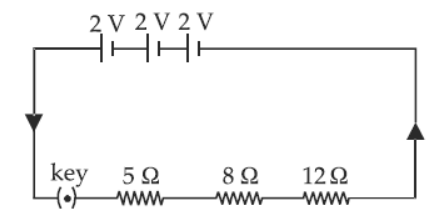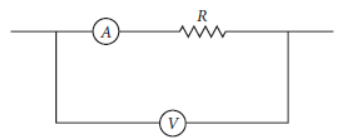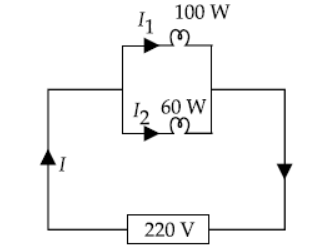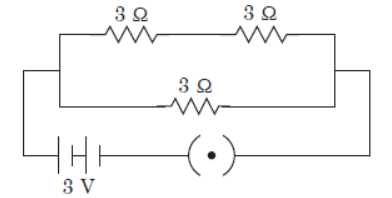Read and download free pdf of CBSE Class 10 Science Electricity Sure Shot Questions A. Students and teachers of Class 10 Science can get free advanced study material, revision notes, sure shot questions and answers for Class 10 Science prepared as per the latest syllabus and examination guidelines in your school. Class 10 students should download this study material which will give them more knowledge for all chapters in Science and all important topics which are scoring and can get you more marks. Students should also download free pdf of Chapter wise Notes for Class 10 Science prepared by school teachers as per the latest NCERT, CBSE, KVS books and syllabus issued this year and also download free worksheets and question papers available here to get higher scores in school exams and tests, also click here for more Study Material for Class 10 Science
Study Material for Class 10 Science Chapter 11 Electricity
Class 10 Science students should refer to the following Pdf for Chapter 11 Electricity in Class 10. These notes and test paper with questions and answers for Class 10 Science will be very useful for exams and help you to score good marks
Class 10 Science Chapter 11 Electricity
CBSE Class 10 Science Chapter 12 Electricity Very Short Answer Type Questions
Question. State Ohm’s law.
Answer. It states that the potential difference V, across the ends of a given metallic wire in an electric circuit is directly proportional to the current flowing through it, provided its temperature remains the same. Mathematically,
V ∝ I
V = RI
where R is resistance of the conductor
Question. How is the resistivity of alloys compared with those of pure metals from which they may have been formed?
Answer. The resistivity of an alloy is generally higher than that of its constituent metals.
Question. Write the relation between resistance (R) of filament of a bulb, its power (P) and a constant voltage V applied across it.
Answer. P=V2/R
Question. Power of a lamp is 60 W. Find the energy in joules consumed by it in 1 s.
Answer. Here, power of lamp, P = 60 W
time, t = 1 s
So, energy consumed = Power × time
= (60× 1)J = 60 J
Question. Why are filaments of incandescent lamps made of thin tungsten wire ?
Answer. Tungsten has low resistivity and as such only a thin wire filament will have high resistance necessary to produce large amount of heat to light the bulb brilliantly. Further, tungsten has very high melting point (3300 K) and as such the filament will not burn at the high temperature (2400 K) at which it becomes incandescent.
Question. Why is an ammeter placed in series of a conductor/resistor in a circuit?
Answer. Because ammeter is a low resistance instrument. So, the current flowing through the circuit remains virtually unaffected.
Question. Three resistors of 3 W, 6 W and 4 W are connected in series. Calculate the total resistance of the combination.
Answer. Resistance in a series circuit is given by the expression
R = R1 + R2 + R3
Total resistance R = 3 W + 6 W + 4 W = 13 W.
Question. Draw a schematic diagram of a circuit consisting of a battery of three cells of 2 V each, a 5 W resistor, a 8 W resistor, and a 12 W resistor, and a plug key, all connected in series.
Answer. The schematic circuit diagram is shown here:

Question. Name a device that helps to maintain a potential difference across a conductor.
Answer. A battery consisting of one or more electric cells is used to maintain a potential difference across a conductor.
Question. Name the material with the least resistivity.
Answer. Silver metal is best conductor of electricity and has lowest resistivity.
CBSE Class 10 Science Chapter 12 Electricity Short Answer Type Questions
Question. Name a device that you can use to maintain a potential difference between the ends of a conductor. Explain the process by which this device does so.
Answer. A cell or a battery can be used to maintain a potential difference between the ends of a conductor. The chemical reaction within a cell generates the potential difference across the terminals of the cell, even when no current is drawn from it. When it is connected to a conductor, it produces electric current and maintain the potential difference across the ends of the conductor.
Question. (i) List three factors on which the resistance of a conductor depends.
(ii) Write the SI unit of resistivity.
Answer. (i) Resistance of a conductor depends upon the following factors:
(1) Length of the conductor : Greater the length (l) of the conductor more will be the resistance (R).
R ∝ l
(2) Area of cross-section of the conductor: Greater the crosssectional area of the conductor, less will be the resistance.
R∝1/A
(3) Nature of conductor.
(ii) SI unit of resistivity is Ω m.
Question. Calculate the resistance of a metal wire of length 2 m and area of cross section 1.55 × 10–6 m2, if the resistivity of the metal be 2.8 × 10–8 W m.
Answer. For the given metal wire,
length, l = 2 m
area of cross-section, A = 1.55 × 10–6 m2
resistivity of the metal, r = 2.8 × 10–8 W m
Since, resistance, R=p l/A

Question. List the advantages of connecting electrical devices in parallel with an electrical source instead of connecting them is series.
Answer. (a) When a number of electrical devices are connected in parallel, each device gets the same potential difference as provided by the battery and it keeps on working even if other devices fail. This is not so in case the devices are connected in series because when one device fails, the circuit is broken and all devices stop working.
(b) Parallel circuit is helpful when each device has different resistance and requires different current for its operation as in this case the current divides itself through different devices. This is not so in series circuit where same current flows through all the devices, irrespective of their resistances.
Question. A cylinder of a material is 10 cm long and has a cross section of 2 cm2. If its resistance along the length be 20 ohm. What will be its resistivity?
Answer. Here, l = 10 cm, A = 2 cm2
R = 20 ohm
Using, R=p l/A
p =RA/l =20 ×2/10 = 4 ohm cm
= 0.04 ohm m
Question. In the circuit shown below, the ammeter and the voltmeter readings are 3 A and 6 V respectively. Then find the value of resistance R.

Answer. Case I : If ammeter A and voltmeter V are ideal, then
R= = 6V/3A=2 Ω
Case II : If ammeter A and voltmeter V has some finite
resistance, then R < 2 W.
Question. Which uses more energy, a 250 W TV set in 1 h or a 1200 W toaster in 10 minutes?
Answer. Energy consumed by TV set
= 250 W × 1 h = 250 J s–1 × 60 × 60 s
= 900,000 J
Energy consumed by toaster
= 1200 W × 10 min = 1200 J s–1 × 10 × 60 s
= 720,000 J.
Thus, the TV Set will use more energy.
Question. Two lamps, one rated 100 W at 220 V, and the other 60 W at 220 V, are connected in parallel to electric mains supply.

What current is drawn from the line if the supply voltage is 220 V?
Answer. Since both the bulbs are connected in parallel and to a 220 V supply, the voltage across each bulb is 220 V. Then
Current drawn by 100 W bulb,
I1 = Powerrating/Voltageapplied-100w/220v = 0.454A
Question. (a) List the factors on which the resistance of a conductor in the shape of a wire depends.
(b) Why are metals good conductors of electricity whereas glass is a bad conductor of electricity ? Give reason.
(c) Why are alloys commonly used in electrical heating devices ? Give reason.
Answer. (a) Resistance of a conductor depends upon the following factors:
(1) Length of the conductor : Greater the length (l) of the conductor more will be the resistance (R).
R ∝ l
(2) Area of cross-section of the conductor: Greater the crosssectional area of the conductor, less will be the resistance. R∝1/A
(3) Nature of conductor.
(b) Metal have very low resistivity and hence they are good conductors of electricity.
Whereas glass has very high resistivity so glass is a bad conductor of electricity.
(c) Alloys are commonly used in electrical heating devices due to the following reasons
(i) Alloys have high melting point
(ii) Alloys have higher resistivity than metals
(iii) Alloys do not get oxidised or burn readily.
Question. Three resistors of 3 W each are connected to a battery of 3 V as shown. Calculate the current drawn from the battery.

Answer. As given in circuit diagram, two 3 W resistors are
connected in series to form R1, so
R1 = 3 W + 3 W = 6 W
And, R1 and R2 are in parallel combination,
Hence, equivalent resistance of circuit (Req) is given by
1/Req= 1/R1+ 1/R2
1/Req= 1\ 6+1\3 = 1+2/6=3/6=1/2
or Req = 2 W
Using Ohm’s law, V = IR
Electricity
We get,
3V = I × 2 W
or I = 3/2A =1.5 A
Current drawn from the battery is 1.5 A.
Question. An electric iron has a rating of 750 W, 200 V. Calculate:
(i) the current required.
(ii) the resistance of its heating element.
(iii) energy consumed by the iron in 2 hours.
Answer. Here, P = 750 W, V = 200 V
(i) As P = VI
I = P/V = (750/200) A = 3.75 A
(ii) By Ohm’s law V = IR or R = V/I
R = 200/3 .75=53 .3
(iii) Energy consumed by the iron in 2 hours
= P × t = 750 W × 2 h = 1.5 kWh
or E = (750 × 2 × 3600) J = 5.4 × 106J
ELECTRICITY
1. Define Electrostatic potential.
2. What is potential difference?
3. Define 1 volt.
4. Name the SI unit of potential difference.
5. Is potential difference a scalar or a vector quantity?
6. Name the instrument used to measure potential difference.
7. Does a voltmeter have a high or low resistance?
8. Write the other name of Joule/Coulomb?
9. How much work is done when one coulomb of charge moves against a potential difference of 1 volt?
10. Name the SI unit of electric current.
11. Is electric current a scalar or vector quantity?
12. Name the instrument used to measure electric current.
13. Does an ammeter have low or a high resistance?
14. Write the other name of variable resistance.
15. How do we connect an ammeter in a circuit?
16. Write the unit of electrical resistance.
17. State the factors on which the resistance of a conductor depends.
18. What is the term for the reciprocal of resistance?
19. What is the nature of the graph between I and V for a metallic conductor?
20. Does Ohm’s law hold for a copper wire?
21. Does Ohm’s law hold for a liquid electrolyte?
22. Does Ohm’s law hold for a vacuum tube?
23. Following are the I vs V graphs for a (a) metallic conductor (b) liquid electrolyte and (c) vacuum tube. In which case dows the Ohm/s law hold good?
24. What do you mean by resistance?
25. Dows the resistance of a metal change when we raise the temperature of the metal?
26. Name the substance having the largest and smallest electrical resistance amongst the following: Silver, copper, nichrome, rubber, acidulated water.
27. Name the best conductor of electricity.
28. Name an excellent insulator.
29. Is wood a good conductor of electricity.
30. When are two resistances said to be in series?
31. When are two resistances said to be in parallel?
32. How many different resistance-combinations are possible with two equal resistors, taking both of them together?
33. The unit of resistance is ohm. What is the unit of conductance?
34. Define electric power.
35. What is the SI unit of electrical power?
36. Name the quantity which is the product of potential difference and current.
37. Express power P in terms of I and R.
38. Write various formulae for electric power.
39. What does 220V, 100W written on an electrical appliance mean? What do you mean by power rating?
40. Which of the following electrical appliances usually has the (a) highest (b) least, power ratings? Tube light, Electric fan, Electric heater, Immersion heater.
41. Which of the following electrical appliances usually draws the (a) highest and (b) least, current when operated at 220V? Tube light, Electrical fan, Electrical heater, Immersion heater.
42. What do you mean by electrical energy being consumed by an electrical appliance?
43. Write the SI unit of electrical energy.
44. Write the commercial unit of energy.
45. Define one Kilowatt-hour.
46. Convert 1 Kwh to MJ.
47. What is the ratio of SI units to C.G.S. unit of electrical energy?
48. What are the factors on which electrical energy consumed by an eletrcial appliance depends?
49. What do you mean by one unit of electrical energy?
50. How many joules are in one watt-hour?
51. List some important effects of electric current.
52. Name the quantity whose role in mechanics is similar to the role of resistance in electrical circuits.
53. Write a formula for calculating the amount of heat (H) produced in a resistor of resistance R when current I is passed through it for time t.
54. List of factors on which heating effect of electric current depends.
55. How is the heat produced by a current passing through a constant resistance related to the strength of the current?
56. Name the Scientist who gave the formula for finding the heating produced in a conductor.
57. Is joule’s heating a reversible effect?
58. How much can be Joule’s heating produced in an ideal insulator?
59. Name three electrical appliances that involve the heating effect of electric current.
60. Is electric fuse an application of heating effect of current?
61. Out of 5A fuse and 15A fuse which will you prefer to use for the lighting circuit?
62. In domestic wiring do we connect various distribution circuits in series?
63. Usually three insulated wires of different colours are used in electrical appliance. Name the three colours.
64. W. hat do you mean by short circuiting?
65. What do you mean by a fuse?
66. Should a fuse wire be connected in series or in parallel in the main circuit?
67. Can we use a copper wire as a fuse wire?
68. Name the instrument used to measure current in a circuit.
69. Name the instrument used to detect weak currents in a circuit.
70. Is ammeter connected in series or parallel in a circuit?
71. What does the potential of a charged body determine?
72. Is potential difference between two points in an electric field a vector quantity?
73. What does a voltmeter measure?
74. Is a voltmeter same as a voltameter?
75. What are the conditions under which charges cane move in a conductor?
76. How will you maintain a potential difference between the ends of a conductor?
77. Name the quantity that determines the rate of flow of charge through a conductor.
78. What determines the direction of flow of charge: Potential of a body or Quantity of charge on a body?
79. When the two ends of copper wire are connected to the two terminals of a battery some potential difference is created between its ends. Do electrons start flowing from high potentialend to low potential end?
80. In the question above, does current flow from the low potential end to the high potential end of the wire?
81. What is the difference between a cell and a battery?
82. What do you mean by an electric circuit?
83. What do you mean by a circuit diagram?
84. How does a cell maintain some constant potential difference across its terminals?
85. Do all substances have the same resistivity?
86. Give two substances having very low resistivities.
87. Give two substances having moderate resistivities.
88. Give two substances having high resistivities.
89. What is the name given to substances which are used for making heating soils?
90. Why do electricians wear rubber shoes or sandals or rubber hand gloves while working?
91. What are the two ways in which the resistances are combined?
92. What is meant by an equivalent resistance?
93. Name the SI unit of electrical energy.
94. Name the commercial unit of energy.
95. Name the property of a conductor by virtue of which it opposes the flow of electric current through it.
96. Is resistance a scalar or a vector quantity?
97. Name the property of a conductor by virtue of which it allows the flow of charge through it.
98. Is conductance a scalar or a vector quantity?
99. Which has a greater resistance: thin wire or thick wire of the same material?
100. What happens to the resistance of a copper wire when its temperature is raised?
101. What happens to the conductance of a copper wire when its temperature is raised?
102. What happens to the resistance of the following substances when its temperature is raised?
(i) Aluminium (ii) Silicon (iii) Silver (iv) Germanium
103. Define 1KWh.
104. Name the quantity that represents the electric work done per unit time.
105. Express electric power (P) in terms of current (I) and resistance (R).
106. Express electric power (P) in terms of current (I) and potential difference (V).
107. Name the quantity that represents the product of power rating and time.
108. What voltage for the electrical appliance is kept in India?
109. What voltage is kept for the domestic electric supply in USA?
110. An electric heater is rated as 220V, 1KW. What does it mean?
111. Name the term used to represent the values of the voltage and wattage(power) of an electrical appliance taken together.
112. Which bulb has the lesser resistance: 100W or 60W?
113. Which electrical appliance generally draws more current for the same applied voltage: Electric iron or Electric bulb?
114. What do you understand by the heating effect of electric current?
Please click the link below to download CBSE Class 10 Science Electricity Sure Shot Questions A.
| CBSE Class 10 Science Electricity |
| CBSE Class 10 Science Electricity Notes |
| CBSE Class 10 Science Electricity Sure Shot Questions A |
| Class 10 Science Electricity Exam Notes |
CBSE Class 10 Science Chapter 11 Electricity Study Material
We hope students liked the above Study Material for Chapter 11 Electricity designed as per the latest syllabus for Class 10 Science released by CBSE. Students of Class 10 should download the Study Material in Pdf format, read the notes and related questions and solutions given in above Class 10 Science Study Material on daily basis. All latest Study Material have been developed for Science by referring to the most important and regularly asked topics which the students should learn and practice to get better score in school tests and examinations. Expert teachers of studiestoday have referred to NCERT book for Class 10 Science to develop the Science Class 10 Study Material. After solving the questions given in the Study Material which have been developed as per latest course books also refer to the NCERT solutions for Class 10 Science designed by our teachers. Also download Class 10 Science Sample Papers given on studiestoday. After solving these you should also refer to Class 10 Science MCQ Test for the same chapter.
You can download free study material for Class 10 Science Chapter 11 Electricity for latest academic session from StudiesToday.com
Yes, the study material given here for Class 10 Science Chapter 11 Electricity is for current CBSE session
All study maetrial for CBSE Class 10 Science Chapter 11 Electricity is free

